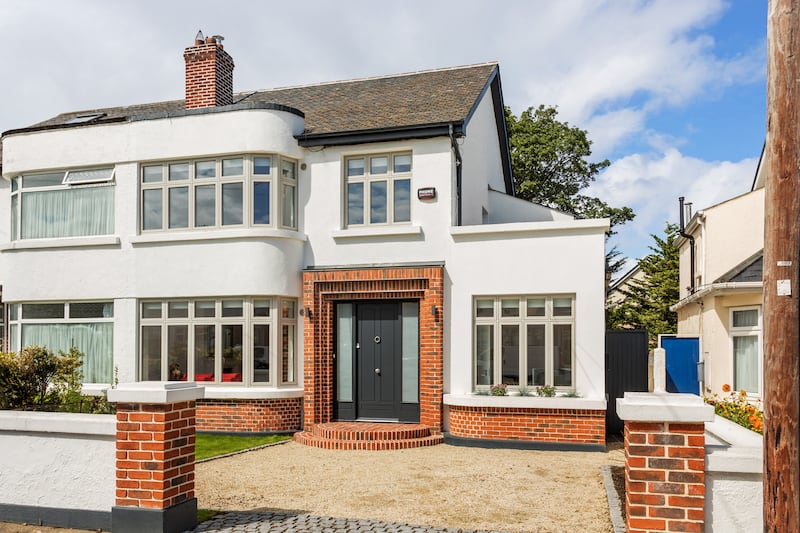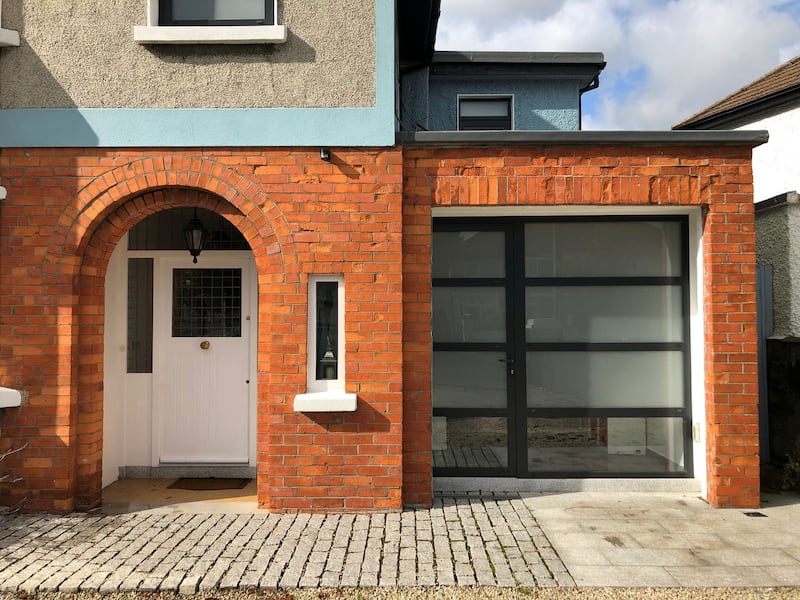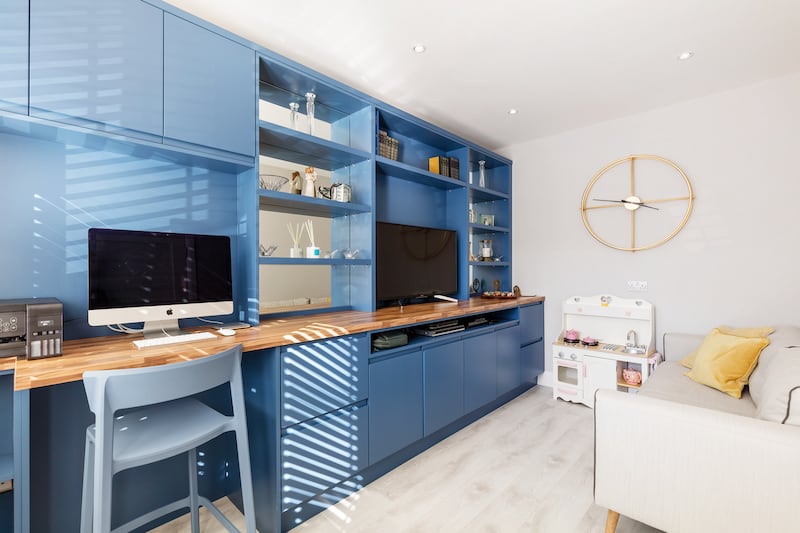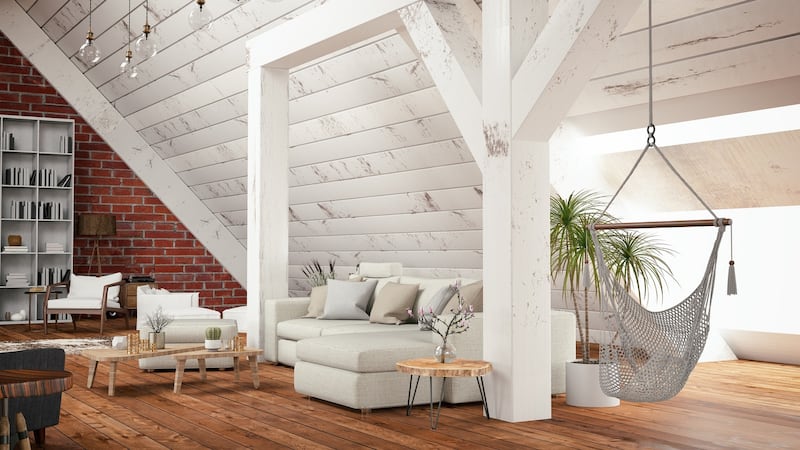If you’re thinking of adding space to your home, especially if you want to keep it to less than 40sq m, or about 430sq ft, so it doesn’t require planning permission, does it make more sense to go up into the attic or out into the garage or the back garden?
We’re all trying to make our homes work harder for us, and with building costs rising to figures that for many no longer make sense, what are the practical options for the prudent?
With a garage, the door can become a window, and you can dry-line the walls and raise the floor. Then all that's required is to wire it. You don't need planning for its change of use
The simplest, quickest and least disruptive option is to convert a garage, according to the quantity surveyor Patricia Power, a familiar face from the RTÉ series Room to Improve. "The framework is there. The garage door can become a window, to let light in, and you can dry-line the walls and raise the floor – and add a damp-proof membrane – if it's one of those step-down-into garages. Then all that's required is to wire it. You don't need planning for its change of use."
If the floor-to-ceiling height is less than the standard 2.4m then you should consider raising the roof – often timber or concrete – so that the room conforms to building regulations, says the architect Ros Criostóir, a director of the Sheehan & Barry practice.
The conservation architect David Flynn, who has been commended several times in the annual RIAI awards, worked on a project in the southside Dublin suburb of Terenure where he converted the garage of a semi-detached house and also extended at the back to create a simple layout that flows in a way that appears effortless but took a lot of effort to get right.
Flynn repurposed the garage of the 1938 home using much of the original space to create a study-cum-playroom. In doing so he raised its ceiling to the same level as those of the interconnecting rooms to the left, creating a decent 2.7m height throughout. But he also reserved a part of the garage to accommodate a good-sized shower room that extends under the stairs (and has a side window for ventilation).


Architect Edward Fitzgerald Selby is currently designing his own home and is repurposing its garage as he did for a recent client in Rathfarnham, in south Dublin. His client needed a home office, so Fitzgerald persuaded him to keep the original exposed concrete ceiling, tiled the floor and reduced the size of the footprint slightly, to give the room a porch of its own, so visitors have somewhere to stand out of the rain while waiting for the door to open. The garage door has been replaced by a pair of glazed steel doors, each panel of glass opaque to give privacy, save for the panel nearest the ground; this has been kept clear, to let you see movement inside and give the doors a greater sense of texture.
A garage conversion will also give you more space per square metre than an attic conversion and can be done for about €15,000. If you’re raising the ceiling, factor in another €10,000, Power says. The construction process will also create less mess if the existing structure doesn’t need to be rebuilt, Criostóir says, especially if you’re going to use it as children’s den, TV room or guest bedroom.
In contrast, an attic conversion, if you want it to conform to building regulations, is more costly and far more disruptive, Power says. If you live in a two-storey house and want to convert the attic you will need planning permission to use it as a bedroom.
Most of Power’s clients are investing in the serious upgrades required. These include the installation of fire doors with overhead door closers – the kind you see in offices – on the ground and first floors. You also need to slab the first-floor ceiling, and there needs to be 2m of headroom above each step on the staircase leading to the attic.


Some house types are easier to adapt than others. Mid-century semis have more adaptable roof styles. Local-authority-built houses from the 1950s and 1960s are far tighter and make it difficult to create a habitable attic room. Pre-1900s homes often have a double roof that is quite small despite lofty ceilings.
To do it right you need to wire, insulate and adopt the structure, which will cost from €15,000 to €20,000, excluding VAT, Power says. To make it habitable, with a door and an en suite and walk-in wardrobe, can cost anything from €45,000 upwards, says Power. Complying with fire and other regulations will add about 20 per cent to the cost, Ros Criostóir says.
Adding a dormer or squaring off the roof will add several thousand more. You can, subject to planning permission, add a dormer window or finish out the roof to an A-gable, but all this adds to the expense, and although end-of-terrace houses are considered more suitable for extending at the side, this house style often has a hipped or sloped roof gable that mitigates against an attic conversion, he says.
Most attic conversions do not adhere to the stringent regulations and so cannot be called rooms – nor should they be used as bedrooms, as they do not meet fire rules
Most attic conversions do not adhere to the stringent regulations and therefore cannot be called rooms – nor should they be used as bedrooms, as they do not conform to fire regulations, says Anthony Gilbert of the Attic Man. Ceilings needs to be at least 2.4m high, and to extend across the attic for at least another 2.4m, for the space to conform, he explains.
Gilbert offers a standard attic package that includes three rooflights to the back of the house, stairs, and either an open-plan layout or a room with a door, for €14,950, excluding VAT. He uses an engineer and an architect to certify the space as nonhabitable; the accompanying documentation is essential if you decide to sell the property.
It’s a lot easier to convert the attic in a bungalow, says Power. With attic and garage conversions you lack the flexibility to build to the size and shape you want or need, Criostóir says. You’re limited by the structure and footprint of the house and by the height of its attic, plus the fact that you need at least that 2m clearance from each step of the staircase to the ceiling.
If you need more space, it is worth doing the sums on each possibility and calling an estate agent who knows your area – and, ideally, has sold homes on your street – how much value the work might add to your house.

Andrew Foran, head of valuations at the Quillsen estate agency, isn't a fan of the standard attic conversion lit by rooflights. "The feedback from families is that their preference is for accommodation over two floors rather than three levels, so it might be more prudent to convert the garage. If the garage belongs to a 1940s- or 1950s-age house, then you will need to demolish the existing structure and build a new one. Factor in foundations that could, at a later stage, take a second floor and that is money well spent.
“Unless an attic conversion includes the addition of a dormer, it usually doesn’t work too well. It feels constrained. With a standard conversion costing about €19,000, including VAT, a dormer, which you need planning permission to install, will bring costs up to €30,000-plus.” Will you get that money back?
The holy grail remains the rear extension of less than 40sq m, Criostóir says. “It does cost more to build from new, but you get flexibility of use and it connects the house with the garden. There are still restrictions. You have to retain a minimum of 25sq m of garden space, and you will need planning should you wish to spread the 40sq m over two floors. In smaller, mid-terrace homes regulations require you leave a 1m gap on either side of the adjoining properties, meaning that a small former local-authority build, or a 1990s-style town house that is only 4m or 5m wide, will give you a maximum second-storey width of 3m to 4m – big enough to install a valuable en-suite bathroom but not much more.”
In the current market there is no way to do an extension of less than 40sq m cheaply, Power says. The Society of Chartered Surveyors Ireland suggests a three-bed semi-detached home in Dublin would now cost €207,669 to rebuild – almost as much as in 2008, before the crash. The costs in Cork (€164,703), Galway (€162,657) and Limerick (€159,588) are also back at pre-crash levels, it says. Power's advice is to keep it modest, using standard doors rather than taller, more architecturally imposing ones, and considering alu-clad or uPVC rather than timber or aluminium windows.



















